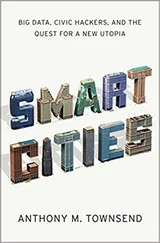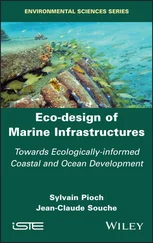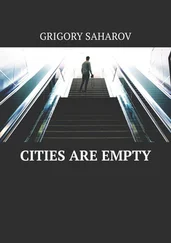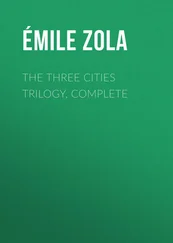Cyberphysical Smart Cities Infrastructures
Здесь есть возможность читать онлайн «Cyberphysical Smart Cities Infrastructures» — ознакомительный отрывок электронной книги совершенно бесплатно, а после прочтения отрывка купить полную версию. В некоторых случаях можно слушать аудио, скачать через торрент в формате fb2 и присутствует краткое содержание. Жанр: unrecognised, на английском языке. Описание произведения, (предисловие) а так же отзывы посетителей доступны на портале библиотеки ЛибКат.
- Название:Cyberphysical Smart Cities Infrastructures
- Автор:
- Жанр:
- Год:неизвестен
- ISBN:нет данных
- Рейтинг книги:4 / 5. Голосов: 1
-
Избранное:Добавить в избранное
- Отзывы:
-
Ваша оценка:
- 80
- 1
- 2
- 3
- 4
- 5
Cyberphysical Smart Cities Infrastructures: краткое содержание, описание и аннотация
Предлагаем к чтению аннотацию, описание, краткое содержание или предисловие (зависит от того, что написал сам автор книги «Cyberphysical Smart Cities Infrastructures»). Если вы не нашли необходимую информацию о книге — напишите в комментариях, мы постараемся отыскать её.
Cyberphysical Smart Cities Infrastructures: Optimal Operation and Intelligent Decision Making,
Cyberphysical Smart Cities Infrastructures
Cyberphysical Smart Cities Infrastructures — читать онлайн ознакомительный отрывок
Ниже представлен текст книги, разбитый по страницам. Система сохранения места последней прочитанной страницы, позволяет с удобством читать онлайн бесплатно книгу «Cyberphysical Smart Cities Infrastructures», без необходимости каждый раз заново искать на чём Вы остановились. Поставьте закладку, и сможете в любой момент перейти на страницу, на которой закончили чтение.
Интервал:
Закладка:
42 42 Parekh, S., Essid, S., Ozerov, A. et al. (2017). Motion informed audio source separation. 2017 IEEE International Conference on Acoustics, Speech and Signal Processing (ICASSP), IEEE, pp. 6–10.
43 43 Asali, E., Shenavarmasouleh, F., Mohammadi, F. et al. (2020). DeepMSRF: A novel deep multimodal speaker recognition framework with feature selection. ArXiv, abs/2007.06809.
44 44 Aloimonos, J., Weiss, I., and Bandyopadhyay, A. (1988). Active vision. International Journal of Computer Vision 1 (4): 333–356.
45 45 Ballard, D.H. (1991). Animate vision. Artificial Intelligence 48 (1): 57–86.
46 46 Ballard, D.H. and Brown, C.M. (1992). Principles of animate vision. CVGIP: Image Understanding 56 (1): 3–21.
47 47 Bajcsy, R. (1988). Active perception. Proceedings of the IEEE 76 (8): 966–1005.
48 48 Roy, S.D., Chaudhury, S., and Banerjee, S. (2004). Active recognition through next view planning: a survey. Pattern Recognition 37 (3): 429–446.
49 49 Tung, H.‐Y.F., Cheng, R., and Fragkiadaki, K. (2019). Learning spatial common sense with geometry‐aware recurrent networks. Proceedings of the IEEE Conference on Computer Vision and Pattern Recognition, pp. 2595–2603.
50 50 Jayaraman, D. and Grauman, K. (2018). End‐to‐end policy learning for active visual categorization. IEEE Transactions on Pattern Analysis and Machine Intelligence 41 (7): 1601–1614.
51 51 Yang, J., Ren, Z., Xu, M. et al. (2019). Embodied visual recognition.
52 52 Das, A., Datta, S., Gkioxari, G. et al. (2018). Embodied question answering. Proceedings of the IEEE Conference on Computer Vision and Pattern Recognition Workshops, pp. 2054–2063.
53 53 Wijmans, E., Datta, S., Maksymets, O. et al. (2019). Embodied question answering in photorealistic environments with point cloud perception. Proceedings of the IEEE Conference on Computer Vision and Pattern Recognition, pp. 6659–6668.
54 54 Das, A., Gkioxari, G., Lee, S. et al. (2018). Neural modular control for embodied question answering. arXiv preprint arXiv:1810.11181.
55 55 Gordon, D., Kembhavi, A., Rastegari, M. et al. (2018). IQA: Visual question answering in interactive environments. Proceedings of the IEEE Conference on Computer Vision and Pattern Recognition, pp. 4089–4098.
56 56 Hinchey, M.G., Sterritt, R., and Rouff, C. (2007). Swarms and swarm intelligence. Computer 40 (4): 111–113.
57 57 Wang, J., Feng, Z., Chen, Z. et al. (2018). Bandwidth‐efficient live video analytics for drones via edge computing. 2018 IEEE/ACM Symposium on Edge Computing (SEC), IEEE, pp. 159–173.
58 58 Camazine, S., Visscher, P.K., Finley, J., and Vetter, R.S. (1999). House‐hunting by honey bee swarms: collective decisions and individual behaviors. Insectes Sociaux 46 (4): 348–360.
59 59 Langton, C.G. (1995). Artificial Life: An Overview. Cambridge, MA: MIT.
60 60 Hara, F. and Pfeifer, R. (2003). Morpho‐Functional Machines: The New Species: Designing Embodied Intelligence. Springer Science & Business Media.
61 61 Murata, S., Kamimura, A., Kurokawa, H. et al. (2004). Self‐reconfigurable robots: platforms for emerging functionality. In: Embodied Artificial Intelligence, (Fumiya Iida, Rolf Pfeifer, Luc Steels et al.), 312–330. Springer.
62 62 Steels, L. (2001). Language games for autonomous robots. IEEE Intelligent systems 16 (5): 16–22.
63 63 Steels, L. (2003). Evolving grounded communication for robots. Trends in Cognitive Sciences 7 (7): 308–312.
64 64 Durrant‐Whyte, H. and Bailey, T. (2006). Simultaneous localization and mapping: Part I. IEEE Robotics and Automation Magazine 13 (2): 99–110.
65 65 Gupta, S., Davidson, J., Levine, S. et al. (2017). Cognitive mapping and planning for visual navigation. Proceedings of the IEEE Conference on Computer Vision and Pattern Recognition, pp. 2616–2625.
66 66 Zhu, Y., Mottaghi, R., Kolve, E. et al. (2017). Target‐driven visual navigation in indoor scenes using deep reinforcement learning. 2017 IEEE International Conference on Robotics and Automation (ICRA), IEEE, pp. 3357–3364.
67 67 Pomerleau, D.A. (1989). Alvinn: An autonomous land vehicle in a neural network. In: Advances in Neural Information Processing Systems, 305–313. https://apps.dtic.mil/sti/pdfs/ADA218975.pdf.
68 68 Sadeghi, F. and Levine, S. (2016). CAD2RL: Real single‐image flight without a single real image. arXiv preprint arXiv:1611.04201.
69 69 Wu, Y., Wu, Y., Gkioxari, G., and Tian, Y. (2018). Building generalizable agents with a realistic and rich 3D environment. arXiv preprint arXiv:1801.02209.
70 70 Kolve, E., Mottaghi, R., Han, W. et al. (2017). AI2‐THOR: An interactive 3D environment for visual AI. arXiv preprint arXiv:1712.05474.
71 71 Xia, F., Zamir, A.R., He, Z. et al. (2018). Gibson Env: real‐world perception for embodied agents. Proceedings of the IEEE Conference on Computer Vision and Pattern Recognition, pp. 9068–9079.
72 72 Yan, C., Misra, D., Bennnett, A. et al. (2018). CHALET: Cornell house agent learning environment. arXiv preprint arXiv:1801.07357.
73 73 Savva, M., Chang, A.X., Dosovitskiy, A. et al. (2017). MINOS: Multimodal indoor simulator for navigation in complex environments. arXiv preprint arXiv:1712.03931.
74 74 Savva, M., Kadian, A., Maksymets, O. et al. (2019). Habitat: A platform for embodied AI research. Proceedings of the IEEE International Conference on Computer Vision, pp. 9339–9347.
75 75 Datta, S., Maksymets, O., Hoffman, J. et al. (2020). Integrating egocentric localization for more realistic point‐goal navigation agents. arXiv preprint arXiv:2009.03231.
76 76 Song, S., Yu, F., Zeng, A. et al. (2017). Semantic scene completion from a single depth image. Proceedings of the IEEE Conference on Computer Vision and Pattern Recognition, pp. 1746–1754.
77 77 Chang, A., Dai, A., Funkhouser, T. et al. (2017). Matterport3D: learning from RGB‐D data in indoor environments. arXiv preprint arXiv:1709.06158.
78 78 Jaderberg, M., Mnih, V., Czarnecki, W.M. et al. (2016). Reinforcement learning with unsupervised auxiliary tasks. arXiv preprint arXiv:1611.05397.
79 79 Dosovitskiy, A. and Koltun, V. (2016). Learning to act by predicting the future. arXiv preprint arXiv:1611.01779.
80 80 Singh, S.P. and Sutton, R.S. (1996). Reinforcement learning with replacing eligibility traces. Machine Learning 22 (1–3): 123–158.
81 81 Schulman, J., Wolski, F., Dhariwal, P. et al. (2017). Proximal policy optimization algorithms. arXiv preprint arXiv:1707.06347.
82 82 Mur‐Artal, R. and Tardos, J.D. (2017). ORB‐SLAM2: An open‐source SLAM system for monocular, stereo, and RGB‐D cameras. IEEE Transactions on Robotics 33 (5): 1255–1262.
83 83 Mishkin, D., Dosovitskiy, A., and Koltun, V. (2019). Benchmarking classic and learned navigation in complex 3D environments. arXiv preprint arXiv:1901.10915.
84 84 Anderson, P., Chang, A., Chaplot, D.S. et al. (2018). On evaluation of embodied navigation agents. arXiv preprint arXiv:1807.06757.
85 85 Jackson, F. (1982). Epiphenomenal qualia. The Philosophical Quarterly (1950‐) 32 (127): 127–136.
86 86 Tye, M. (1997). Qualia. https://seop.illc.uva.nl/entries/qualia/.
87 87 Hosoda, K. (2004). Robot finger design for developmental tactile interaction. In: Embodied Artificial Intelligence, (Fumiya Iida, Rolf Pfeifer, Luc Steels et al.), 219–230. Springer.
88 88 Floreano, D., Mondada, F., Perez‐Uribe, A., and Roggen, D. (2004). Evolution of embodied intelligence. In: Embodied Artificial Intelligence, (Fumiya Iida, Rolf Pfeifer, Luc Steels et al.), 293–311. Springer.
89 89 Floreano, D., Husbands, P., and Nolfi, S. (2008). Evolutionary Robotics. Technical report. Springer‐Verlag. https://infoscience.epfl.ch/record/111527.
90 90 Pfeifer, R. and Iida, F. (2004). Embodied artificial intelligence: trends and challenges. In: Embodied Artificial Intelligence, (Fumiya Iida, Rolf Pfeifer, Luc Steels et al.), 1–26. Springer.
Читать дальшеИнтервал:
Закладка:
Похожие книги на «Cyberphysical Smart Cities Infrastructures»
Представляем Вашему вниманию похожие книги на «Cyberphysical Smart Cities Infrastructures» списком для выбора. Мы отобрали схожую по названию и смыслу литературу в надежде предоставить читателям больше вариантов отыскать новые, интересные, ещё непрочитанные произведения.
Обсуждение, отзывы о книге «Cyberphysical Smart Cities Infrastructures» и просто собственные мнения читателей. Оставьте ваши комментарии, напишите, что Вы думаете о произведении, его смысле или главных героях. Укажите что конкретно понравилось, а что нет, и почему Вы так считаете.

![Чарльз Диккенс - A Tale of Two Cities [С англо-русским словарем]](/books/26616/charlz-dikkens-a-tale-of-two-cities-s-anglo-thumb.webp)










